The Beginning or the End

Brief Synopsis
Cast & Crew
Norman Taurog
Brian Donlevy
Robert Walker
Tom Drake
Beverly Tyler
Audrey Totter
Film Details
Technical Specs

Synopsis
Speaking from his laboratory, Dr. J. Robert Oppenheimer, a theoretical physicist and one of the world's leading atomic scientists, praises the discovery of atomic energy, buts also warns of the many dangers posed by the discovery. To illustrate his concerns about the future of atomic science, Oppenheimer outlines the history of the study of the atom, beginning his account in the early days of World War II: As Germany races to build the first atomic weapon, many American scientists are busy studying the use of the atom as a source of energy. One such scientist is Matt Cochran, a Columbia University researcher working under the guidance of Dr. Enrico Fermi and Dr. Marré. Matt's research leads to an important discovery that confirms Marré and Fermi's theory that splitting uranium atoms produces energy. When Matt raises his concern that atom splitting will be used to make highly destructive weapons, Fermi tries to allay his fears by reassuring him that the United States government is interested primarily in energy uses for the atom. Following the success of early atom-splitting experiments, Matt and some of his colleagues decide to take their discovery to world-famous scholar Dr. Albert Einstein, who, in turn, interests President Franklin Delano Roosevelt in the new findings. With Roosevelt's cooperation, researchers at universities all over the United States begin studying the atom. In 1941, following America's entrance into the war, Roosevelt authorizes a project to develop an atomic bomb, despite a predicted cost of up to two billion dollars. Work on the bomb begins in December 1942, at the University of Chicago, with help from leading scientists Dr. Chisholm, Dr. John Wyatt and Dr. C. D. Howe. These scientists are later joined by Col. Jeff Nixon, who has been assigned to act as an official observer for the Army. Though the initial atomic experiments are successful, Matt begins to question the ethics of the project, and shares his concerns with his new wife Anne. Meanwhile, in Washington, D.C., Gen. Leslie R. Groves is placed in charge of bringing the scientific, industrial and defense communities together to build the atomic bomb, and Jeff is assigned to work for him. In 1945, following the death of Roosevelt, Harry S. Truman becomes President of the United States and vows to continue the atomic project. A short time later, Oppenheimer, who is now head of operations at the bomb's Assembly Center in Los Alamos, New Mexico, receives the first delivery of uranium-235, a necessary component of atomic bomb production. The uranium is used to build the first atomic bomb, which is eventually tested successfully in the New Mexico desert. In July 1945, after Truman gives an order to use the atomic bomb to force Japan to surrender, Jeff and Matt are assigned to accompany the crew transporting the bomb to the South Pacific. While preparations are made to drop the bomb on Hiroshima, Japan, tragedy strikes when Matt accidentally comes into contact with radioactive material and dies. The next day, on 6 August 1945, Jeff and others board the "Enola Gay," the airplane carrying the atomic bomb, and watch in silence as the bomb is dropped over Hiroshima. After the mission, Jeff returns home and tells Anne the sad news of Matt's death.

Director

Norman Taurog
Cast

Brian Donlevy

Robert Walker

Tom Drake

Beverly Tyler

Audrey Totter

Hume Cronyn

Hurd Hatfield

Joseph Calleia

Godfrey Tearle
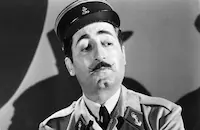
Victor Francen

Richard Haydn

Jonathan Hale

John Litel
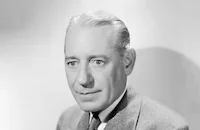
Henry O'neill
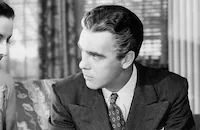
Warner Anderson

Barry Nelson
Art Baker

Ludwig Stossel

John Hamilton
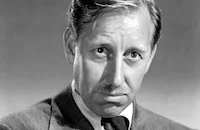
Frank Ferguson
Tom Stevenson

John Gallaudet

Nella Walker
Edward Earle

Moroni Olsen

Norman Lloyd

Jim Davis
Charles Trowbridge
Frank Wilcox
Henry Hall

Paul Harvey
Larry Johns
Robert Emmett Keane
James Bush
Trevor Bardette

William Wright
Damian O'flynn
Martin Kosleck
Rudolph Anders
Torben Meyer
William Forrest
Erville Alderson
Clarke Hardwicke
Guy Williams

Greg Barton
William Bishop
William Leicester
William Roberts
Jack Sterling
Bob Gilbert
Brad Slaven
Richard Terry
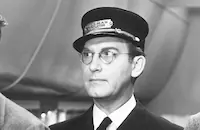
Emmett Vogan
Forbes Murray
John B. Kennedy
Charles Bradstreet
Michael Mcgrath
Frank Leigh
Frank Baker
John Banner
Otto Reichow
Jack Worth
Frederick Giermann
Fred Nurney
Jerry Schumacher
Arno Frey
Hans Von Morhart
Hans Schumm
Don E. Lewis
David Thursby
Leslie Vincent
Ann Howard
Patricia Medina
Stanley Blystone
Connie Weiler
Jon Gilbreath
Frank Erickson
Ray Paige
Larry Blake
Dorothy Scott
Earl Hodgins
George Peters
Harry Denny
Eddie Parks
Sybil Merritt
Ed Cassidy
Robert Malcolm
Frank Scannell
Harry T. Wensel
Paul Bryar
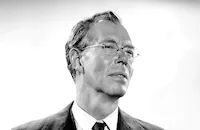
Walter Baldwin
Louis Mason
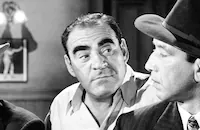
Ralph Dunn
Tom Pilkington
Charles Peck
King Lockwood
Selmer Jackson
Mike Kilian
Tom Dillon
John James
Frank Dae
Boyd Davis
George Carleton
Carlyle Blackwell
Richard Abbott
Philip Ahlm
Bert Davidson
John Gannon

Bobby Jordan
James Nolan
Kenneth Gibson
James Leong
Spencer Chan
Holger Bendixen

Richard Loo
H. T. Tsiang
William Tannen
Larry Nunn
Tommy Kelly
Ralph Crane
Robin Short
Chris-pin Martin
Ted French
Joe Bernard
Nolan Leary
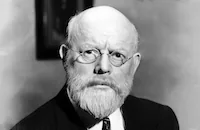
Howard Mitchell
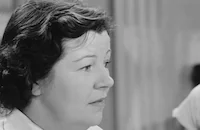
Margaret Bert
Helyn Eby-rock
Roy Butler
James Horne Jr.
Bill Hickman
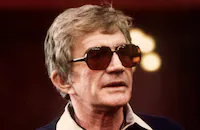
Blake Edwards
Harry Hayden
Ellen Ross
Lew Smith
Lee Bennett
Tom Burton
George Turner
Bob Pepper
Robert Bice
Bron Clifford
James Taggart
Stewart Garner
Rod Bacon
Kirk Alyn
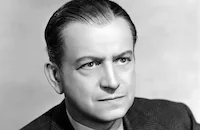
Russell Hicks
Peter Chong
Paul Fung
Jack Lee
Eunice Soo Hoo
Ronald Wong
Weaver Levy
Carl Saxe
Robert Spencer
John Albright
Douglas Carter
Frank Chalfant
John Bogden
Roger Mcgee
Danny Merrill
Dick Earle
James Carlisle
Wedgewood Nowell
Bill Janssen
Bill Graeff Jr.
Ray Pemberton
Carl Wester
Paul Kruger
Mitchell Brother
Lloyd Everett
Tex Brodus
Bruce Cowling
George Travell
Jimmy Hunt
Tom Gibson
Jack Manolas
Frank Tomlinson
Al Kunde
Budd Fine
Jack Gallagher
Merlyn Nelson
Cedric Stevens
Will Van Vleck
Frisky, A Dog
Harry Tyler
Eddy Waller
Crew
Daniele Amfitheatrof
Peter Ballbusch
George Boemler
Robert Considine
William A. Consodine Col., A.u.s.
Jack Dawn
Cedric Gibbons
A. Arnold Gillespie
Keogh Gleason
Stanley Goldsmith
Dr. David Hawkins
Irene
Donald Jahraus
Ray June
Major Glen Landreth
Samuel Marx
Frank Myers
Warren Newcombe
Hans Peters
Sergei Petschnikoff
W. Bradford Shank
Douglas Shearer
Archbishop Francis J. Spellman
Charles W. Sweeney Lt. Col., A.c.
Dr. Edward R. Tompkins
Paul Van Sloun
Frank Wead
Bobby Webb
Dr. H. T. Wensel
Edwin B. Willis

Videos
Movie Clip




Trailer
Film Details
Technical Specs

Articles
Beginning or the End
While other writers and studios had also proposed a film about the birth of the atomic age, this was the first reality-based feature on the subject to see the light of a projector. Along the way the project passed through numerous writers at MGM including an outline written by none other than Atlas Shrugged author Ayn Rand in January of 1946 under the working title Top Secret. Among her contributions was a montage of Hitler's conquests and a sequence involving a dying informer sending an urgent message to Albert Einstein, as well as a brief sequence with President Franklin Delano Roosevelt giving the go ahead for the bomb project. Some of the other writers brought on at various points as seen in MGM's original production records included Bob Considine, Robert Smith, Frank Wead, Norman Krasna, David Hawkins, John Lee Mahin, Glenn Tryon, and producer Sam Marx, who contributed written narration to the opening sequence. Alternate titles were also temporarily assigned to the film including Atom Bomb and The Manhattan Project.
Extensive research was undertaken to ensure accuracy including painstaking details on the Enola Gay and its crews, as well as other details like the intricacies of military attire with inspirations including Major General Curtis E. LeMay, the so-called "grim prophet." Several real-life figures were depicted in the film, including both U.S. presidents with FDR played by Godfrey Tearle and Truman by Art Baker. Other familiar figures were played by actors strongly associated with film noir: Dr. J. Robert Oppenheimer, played by Hume Cronyn hot off of his role in The Postman Always Rings Twice (1946); Major General Leslie R. Groves (Brian Donlevy, back to back with Kiss of Death the same year); Italian physicist Dr. Enrico Fermi (Joseph Calleia, just seen in Gilda and Deadline at Dawn the year before); and of course, Dr. Albert Einstein (Ludwig Stössel, just seen in Fritz Lang's Cloak and Dagger).
However, this being a Hollywood studio film, there also had to be a dramatic core for audience identification. As the concept of the film was developed further from the idea of an ambiguous moral stance about the use of atomic weapons, greater emphasis was placed on Matt Cochran, a fictionalized composite character played by Tom Drake, still best known as "the boy next door" John Truett in Meet Me in St. Louis (1944). A clean-cut MGM contract actor, he had also recently appeared in the studio's Courage of Lassie and The Green Years, both 1946. Also added were Robert Walker (soon to achieve immortality in 1951's Strangers on a Train) as a military colonel and Hurd Hatfield (another MGM vet from the 1945 version of The Picture of Dorian Gray) as a scientist, though it's still Drake who drives the film to its melodramatic, sacrificial climax.
In addition to the newly added characters, the ending of the film was altered several times in production. Originally the concept involved concluding with the devastation of Hiroshima and Nagasaki with a child finding a note written in Japanese and English threatening further imminent destruction unless Japan surrenders, but the tone grew more sentimental and patriotic as the cameras started rolling. Many critics derided the eventual epilogue involving the Lincoln Memorial, finding it overly manipulative and obviously tacked on (which it was).
With the Production Code still controlling all of the Hollywood output at the time, this film ran into few problems but had to lose some of its edgier dialogue during the approval process. Some of the deleted lines included potentially derogatory references to Mexicans, a query about radioactive material ("Is it true if you fool around with that stuff you don't like girls anymore?"), and a potentially offensive reference to national politics ("I got it confidential--we're makin' the front ends of horses. We ship 'em to Washington to hook on to the other end."). In Spain the film underwent an additional round of censorship when the local authorities demanded the removal of the chaplain's invocation before the Hiroshima bomb drop.
The critical reception for The Beginning or the End ranged from respectful and positive to mixed, with Variety summing it up as "a vivid documentary picturization" that "suffers, however, from an inept mixture of atom and hokum." However, seen today it's a fascinating snapshot of the nation's identity during its postwar transition, functioning exactly like the time capsule mission statement heard in its opening minutes.
By Nathaniel Thompson

Beginning or the End
Quotes
Trivia
Notes
The opening credits of the viewed film were preceded by a mock newsreel, in which Hume Cronyn, Brian Donlevy and other actors, portraying their characters from the film, are seen burying a time capsule commemorating the discovery of atomic power. The onscreen credits contain the following written statement: "With acknowledgment to Mr. Tony Owen for his cooperation." Many of the individuals depicted in the film were well-known government figures and scientists who were directly or indirectly involved in the production of the atomic bomb during World War II. Among those portrayed were Harry S. Truman, president of the United States at the time of the bombing of Hiroshima, Japan; Major General Leslie R. Groves, head of the atomic bomb project; J. Robert Oppenheimer, head of the team of scientists who developed the bomb; and Secretary of War Henry Stimson. According to a pre-production Hollywood Reporter news item, M-G-M consulted with Groves, Oppenheimer and Truman during the preparation of the film. Major Charles Sweeney, the pilot of the airplane that dropped the atomic bomb on Nagasaki, Japan, was commissioned by M-G-M to serve as a military technical advisor.
Hollywood Reporter news items in December 1945 and January 1946 indicate that M-G-M, Paramount and Twentieth Century-Fox were engaged in a race to be the first studio to produce a motion picture about the atomic bomb. M-G-M gave the picture top priority, and had story writer Robert Considine rush pages of his treatment, as he completed them, to the studio script writers. A March 1946 Hollywood Reporter news item noted that producer Hal Wallis, who was preparing a $1,500,000 atomic picture entitled Top Secret for Paramount, agreed to cancel his film, merge his story property with M-G-M's and serve as an advisor on the M-G-M picture. Wallis, the first to enter the atomic picture race. negotiated an initial payment plus a substantial gross percentage of the picture's profits in exchange for his story material and research.
A December 1945 Hollywood Reporter news item noted that M-G-M stars Spencer Tracy, Clark Gable and Van Johnson were "being groomed for roles" in the film. According to various Hollywood Reporter news items in June 1946, a controversy erupted when former First Lady Eleanor Roosevelt objected to the casting of Lionel Barrymore as Franklin D. Roosevelt, alleging that the actor had made disparaging remarks about the late president. Production on the film had already begun when the studio decided to hold up Barrymore's scenes until Mrs. Roosevelt had the opportunity to respond to a letter from Barrymore, in which he explained his political statements. Though Barrymore claimed that his remarks were misinterpreted, the Roosevelt family continued to disapprove of the casting and M-G-M replaced him with Godfrey Tearle. A December 1945 Hollywood Reporter news item noted that M-G-M consulted with Archbishop Francis J. Spellman of New York, who offered a special Mass on the the island of Tinian for American crew members who were assigned to bomb Hiroshima and Nagasaki.
Although contemporary sources indicate that Leon Ames and Agnes Moorehead were cast, they did not appear in the released film. A pre-production Hollywood Reporter news item reported that actor Redmond Doms had been set for a role, but his appearance in the final film has not been confirmed. The film marked the motion picture debut of Guy Williams, who played the title character in the Walt Disney television series Zorro (1957-1959), as well as "Professor John Robinson" in the series Lost in Space (1965-1968). According to a July 1946 Hollywood Reporter news item, nine of the men who portrayed crew members of the "Enola Gay" were actual World War II veterans. Contemporary sources note that some filming took place in Fort Worth, TX; Los Alamos, NM; Oak Ridge, TN; and at various university campuses. An October 1946 Hollywood Reporter news item indicates that the release of the film, originally set for October 1946, was postponed as a result of M-G-M studio head Louis B. Mayer's decision to add to the film actual footage of the bombing of Hiroshima.















